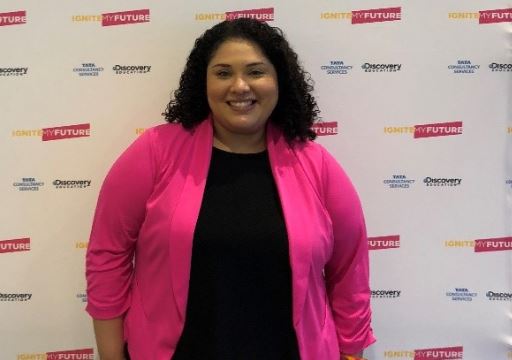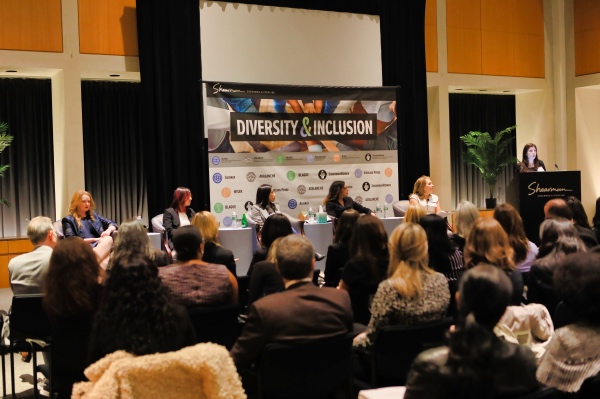 (by Eliza Vancort) The Terminator will kill us. The Matrix will grind us down into batteries. And yeah, Ex Machina. Humans have a time-honored tradition of being terrified that sentient machines are going to destroy everything.
(by Eliza Vancort) The Terminator will kill us. The Matrix will grind us down into batteries. And yeah, Ex Machina. Humans have a time-honored tradition of being terrified that sentient machines are going to destroy everything.
Recently McKinsey Global Institute released the study, Generative AI and the future of work in America. The report was a measured exploration of “Which jobs will be in demand? Which ones are shrinking? And which ones could be hardest to fill?” The headlines in the media were quite different. “Nearly 80% of women’s jobs could be disrupted, automated by AI.”
In reality, what the studies said isn’t really new. It’s the same American story, different facts. Replace “AI” with “pandemic” or “economic downturn” and experts arrive at the same conclusion. In times of upheaval, the people who are hit the hardest in America are women, particularly women who are members of targeted groups with less power and privilege.
Here’s how women can prepare and optimize opportunities for the AI era.
1. Take “STOP AI” off the table .
We can no better stop the AI train than we can stop capitalism. Despite this, many people are working to stop companies from using AI technology instead of humans. This is a losing battle. We live in a capitalist society where maximizing profits is the priority. There are some uses of AI which absolutely can be regulated, such as the demands outlined in the SAG strike. That said, AI isn’t coming, it’s already here. McKinsey estimated that “half of today’s work activities could be automated between 2030 and 2060.” The question isn’t if, or even when. The question is what can you do to prepare?
2. Give the right support to the right people.
Women and people of color in low wage jobs without higher education are most likely to be impacted by AI. They are fourteen times more likely to have their jobs disrupted than higher-wage positions. For these women, education and training to keep up with this emerging technology is a must. Unfortunately, childcare responsibilities still disproportionately fall on women, and this takes a toll. For example, according to the KFF Women’s Health Survey, during the pandemic, “Three out of ten working mothers said they had to take time off because school or daycare was closed.” If women don’t have access to affordable childcare, they are the childcare. Women must have access to training and education, but this is impossible for many without care for their children. They must go hand in hand.
3. Make a difference.
One critical way to claim space is to support other women. If you’re a leader in the public or private sector, work to implement new practices and programs now to position your employees for success in the new era of generative AI. For example, even if your organization doesn’t have the budget for in-house education, experts are now predicting that “Implementing AI can bring about a transformative change in access to education through the creation of personalized learning programs that are tailored to suit each student’s unique learning style, preference, and aptitude.” In other words, AI can help you scale and tailor education for your employees affordably. Get creative about making a difference.
4. Robot-Proof Your Job.
Women are conditioned to be caretakers both in their actions and their communication. This has often resulted in women doing jobs which capitalize on our ability to read people and communicate well, the jobs that require soft skills. The great irony is that soft skills have traditionally been devalued by many because, well, when women go into fields, the field gets less respect and pay. Yet in the new world of AI, those are the very skills that AI just can’t do well. For example, teachers, nurses and therapists are not predicted to be replaced by AI any time soon. If you have soft skills, go into fields that require them, or use those skills to help you stand out in your field. Jobs where humanistic tasks are required, or will augment the job, will be much safer from displacement. If you don’t feel your soft skills are strong, it’s time to brush up on them.
5. Take Advantage of the Positives .
AI is positioned to help women more than men in ways we really need it. One example? Domestic labor. Women have been held back for years by the amount of time they spend on domestic labor. A Pew Research study just recently reported that, “Even when earnings are similar, husbands spend more time on paid work and leisure, while wives devote more time to caregiving and housework.” Should relationships be more equitable? Of course. But they aren’t, and AI has the potential to allow women with the financial means to lessen their domestic load. In fact, research suggests AI may be able to automate about 39 per cent of domestic work within 10 years. Find every advantage like this and capitalize on it.
6. Position Yourself for Success.
This is a pivotal moment in history where women can jump into a field that men do not yet fully dominate. Take every opportunity to educate yourself about this emerging technology while it’s developing. By doing so you will not only survive, but you will position yourself as a leader. If your employer doesn’t support continuing education, get ahead of the problem and think about finding a place that does now. Think ahead so you don’t get left behind.
We can’t stop the AI train. But unlike other times in history, we know this train is coming, and we can prepare for it. This is a moment for women to uplift each other and succeed in a field we have not yet been shut out of. Technological apocalypse need not be our destiny. Women shouldn’t just survive the AI train. With the right preparation, we can thrive.
By: Eliza VanCort, Transformation Teacher and #1 bestselling author of A Woman’s Guide to Claiming Space: Stand Tall. Raise Your Voice. Be Heard (named Maria Shriver’s book of the week), who has dedicated her life to empowering women to live bravely and claim the space they deserve.
(The opinions and views of guest contributions are not necessarily those of theglasshammer.com).









